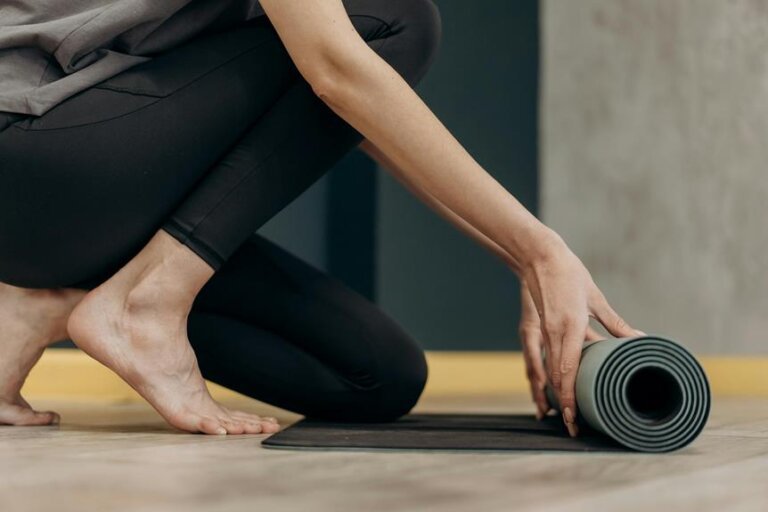Effective Bodyweight Exercises for Beginners
If you're just starting out on your fitness journey, incorporating bodyweight exercises can be a fantastic way to build strength and improve overall fitness.
Squats, push-ups, planks, lunges, and glute bridges are all excellent choices for beginners looking to enhance their workout routine.
But, before you dismiss these basic moves as easy, there's a crucial aspect to consider that can make all the difference in your progress and results.
Squats
If you're new to bodyweight exercises, squats are a fundamental movement to strengthen your lower body. Squats primarily target your quadriceps, hamstrings, and glutes, making them an excellent exercise for building lower body strength.
To perform a bodyweight squat correctly, stand with your feet shoulder-width apart, engage your core, and lower your hips back and down as if you're sitting into a chair. Make sure your knees stay in line with your toes and don't collapse inward. Aim to lower yourself until your thighs are parallel to the ground, then push through your heels to return to the starting position.
When doing squats, it's crucial to maintain proper form to prevent injuries and maximize the benefits. Focus on keeping your chest up, back straight, and weight distributed evenly through your feet. Start with a few sets of 10-15 reps and gradually increase the number as you get more comfortable with the movement. Remember to breathe consistently throughout the exercise to provide oxygen to your muscles.
Incorporating squats into your workout routine will help you develop a strong foundation for more advanced bodyweight exercises.
Push-ups
To progress from squats, engage your upper body and core with push-ups, a classic bodyweight exercise that targets multiple muscle groups. Push-ups are a fantastic way to build strength in your chest, shoulders, triceps, and core all at once.
Begin in a plank position with your hands slightly wider than shoulder-width apart. Lower yourself down by bending your arms until your chest nearly touches the ground, then push back up to the starting position. Keep your body in a straight line throughout the movement, engaging your core to prevent your hips from sagging.
If regular push-ups are too challenging at first, you can modify them by dropping to your knees or performing them against a wall to reduce the resistance. Aim to gradually increase the number of push-ups you can do in a set to continue challenging your muscles. Incorporating push-ups into your routine won't only help you build upper body strength but also improve your overall core stability.
Planks
Engage your core and improve your overall stability with planks, a highly effective bodyweight exercise. Planks target multiple muscle groups simultaneously, making them a fantastic addition to your workout routine.
To perform a plank, start by getting into a push-up position, but with your weight resting on your forearms instead of your hands. Keep your body in a straight line from head to heels, making sure your core is tight and engaged throughout the exercise. Hold this position for as long as you can, aiming to increase your time gradually as you get stronger.
Planks primarily work your core muscles, including the rectus abdominis, transverse abdominis, and obliques. Additionally, they engage muscles in your shoulders, back, and legs, contributing to overall strength and stability.
Lunges
Strengthen your lower body and improve your balance with lunges, a versatile bodyweight exercise. Lunges target various muscles including the quadriceps, hamstrings, and glutes, making them an efficient workout choice. To perform a lunge, start by standing tall with your feet hip-width apart. Take a step forward with one leg, lowering your hips until both knees are bent at a 90-degree angle. Push back up to the starting position using your front leg. Repeat on both sides for a balanced workout.
Lunges not only help in building muscle strength but also aid in enhancing core stability and overall body coordination. They can be modified in many ways to suit different fitness levels. For beginners, starting with static lunges where you hold the position for a few seconds can be a good way to build strength gradually. As you progress, you can incorporate walking lunges or add dumbbells for extra resistance. Incorporating lunges into your routine regularly can lead to improved lower body strength and functional fitness.
Glute Bridges
Improve your lower body strength and activate your glutes effectively with glute bridges, a fundamental bodyweight exercise. Glute bridges target your glute muscles, hamstrings, and lower back while also helping to improve hip stability.
To perform a glute bridge, start by lying on your back with your knees bent and feet flat on the floor. Engage your core and push through your heels to lift your hips towards the ceiling, making sure to squeeze your glutes at the top of the movement. Lower your hips back down and repeat for a set number of reps.
Glute bridges are an excellent exercise for beginners as they help to strengthen the posterior chain and improve overall lower body function. They can also be easily modified by adding resistance bands or holding the bridge position for longer periods. Incorporating glute bridges into your workout routine can help you build a strong foundation for more advanced lower body exercises in the future.
Conclusion
In conclusion, these bodyweight exercises are perfect for beginners looking to improve their strength and fitness levels. By incorporating squats, push-ups, planks, lunges, and glute bridges into your routine, you can target multiple muscle groups and gradually increase your endurance.
Remember to start slow, focus on proper form, and listen to your body to prevent injury. With consistency and dedication, you'll see progress and feel stronger in no time.
So, get moving and start reaping the benefits of these effective exercises!




